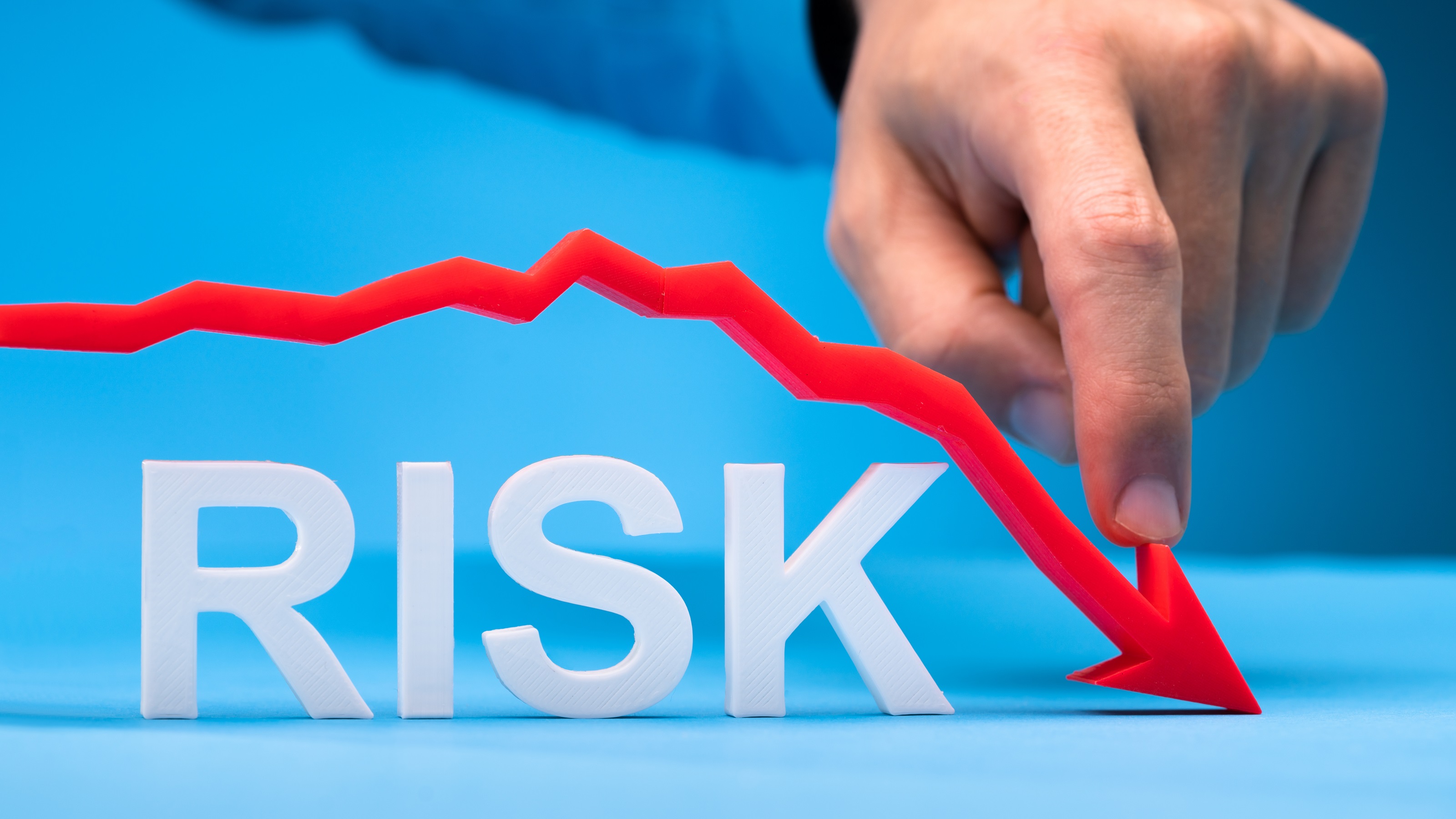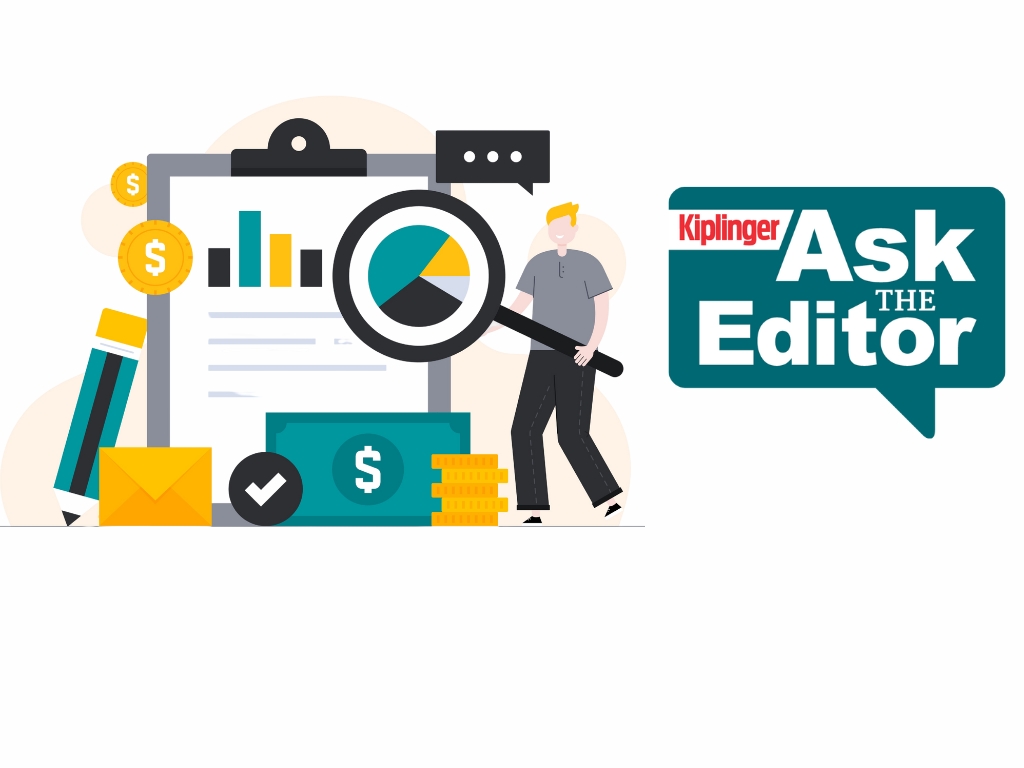10 to 15 Years From Retirement? Time to Scale Back Risk
Taking a more conservative approach in your portfolio can help make sure that you don’t face a big loss if the market suddenly declines.


A young person working their way up the company ladder and investing their money can afford to take an aggressive position. In fact, that approach is advisable. Growing their accounts over a long work life is the goal.
For example, they can invest in index funds that are strictly equities and not worry much about a sharp stock market decline. That’s because they’ve got 40 years or so until retirement and don’t have to fret about major market swings as would a person in their 50s or 60s. History has shown that down markets bounce back, and folks in their 20s, 30s and even 40s have time for their funds to recover, and so they can proceed with an aggressive mindset.
We’ve seen three significant market declines in the last 25 years: the dot-com crash in 2000, the financial crisis of 2008-2009 and in 2022 when the Nasdaq and S&P 500 lost over 30% and over 20%, respectively. Each was followed by a significant rebound.
From just $107.88 $24.99 for Kiplinger Personal Finance
Become a smarter, better informed investor. Subscribe from just $107.88 $24.99, plus get up to 4 Special Issues

Sign up for Kiplinger’s Free Newsletters
Profit and prosper with the best of expert advice on investing, taxes, retirement, personal finance and more - straight to your e-mail.
Profit and prosper with the best of expert advice - straight to your e-mail.
However, as you approach retirement — say you’ve got 10 to 15 years until you plan to call it quits — your mindset should shift to a more consistently conservative approach.
A football analogy
It’s like the “red zone” in football, where a team has the ball on or inside the opponent’s 20-yard line. They’re in a good position to score and don’t want to waste the opportunity with a costly mistake. Likewise, with your retirement, don’t take unnecessary investment risks in the last decade or so of your career that could dramatically decrease your funds.
At that point in your working career, the main goal becomes preserving your hard-earned money, which has grown over decades, and ensuring you have enough income — beyond Social Security and possibly a pension — to replace your salary when you stop working. Those who are on that 10- to 15-year approach ramp to retirement need to scale back their investments from a risk perspective and make adjustments to their portfolio to meet their retirement goals. No one wants to be five or six years from retirement and suddenly lose 30% to 50% of their portfolio because they didn’t adjust their plan properly.
Switching to a preservation mindset
Instead, now is the time to shift toward more diversification and add some safer money to your portfolio — such as properly structured annuities, bonds and bond funds as well as certificates of deposit (CDs) and cash. If you are in or near retirement, being heavily invested in stocks could bring some major issues if we have another year like 2008.
Many people don’t understand that there needs to be a fundamental shift in mentality as you approach retirement. That’s because we’ve spent all of our adult lives getting paid, saving for retirement and paying our bills in a rinse-and-repeat process. Instead of growth and accumulation being the No. 1 job of our portfolios, it’s now all about preservation and distribution.
People struggle with or don’t consider a mindset change especially when the market is experiencing good times. Let’s say you’re coming off of a year where you might have made a 12% to 18% gain in your portfolio. The last thing you want to consider is scaling back your risk. But you don’t want to get in a situation where you’re constantly chasing returns as you approach and enter your retirement years. Taking unnecessary risk, in order to chase higher returns because of a loss that could have been avoided, is not the way to spend your retirement years.
The repercussions of risk and volatility
When things are good in the market, sometimes people forget the risks they’re taking. Think back to the long bull run the market had from 2010 to 2022. During that time, it was hard to convince people to think about their risk and change their portfolio because the market was going nowhere but up for over a decade. Then came the decline of 2022, and some people’s eyes were opened to the repercussions of risk and volatility.
When the market declines to a point where people worry about their money, that’s when they want to address the risk, and sometimes, if they’re near retirement, it’s too late. Having a preservation mindset after a few years of double-digit returns is about investing wisely for retirement.
I like to tell people that retirement is 30 years of unemployment, and they’ve got to pay themselves for 30 years. It’s important that your investments are structured in the best way to ensure that your 30 years of unemployment are taken care of.
Get an evaluation of your current portfolio
How do you go about restructuring your portfolio to reduce your risk and secure retirement income? Step No. 1 is to take the time to meet with a retirement planner or purchase a stock portfolio evaluation tool. Whichever route you choose, get a qualified analysis of your portfolio. See what your asset allocation is and what the recommended risk level is for your age.
People are often surprised about how much risk they’re taking. When I ask most people over 55 what a comfortable loss in portfolio value would be for them in a given year, oftentimes they’ll say 10% to 15%. Then I’ll collect their financial statements, run their portfolio through analytics software, and they discover their portfolio could lose 30% to 40%.
The main reason many people don’t realize how much risk they have is that they haven’t changed their investments in years. They have a 401(k) and rarely think about changing it. The key is having that assessment and making those changes when you are in a position of strength, making those decisions and changes when your portfolio is growing and not making emotional decisions when the portfolio is seeing extended losses.
Once you’ve received a qualified analysis of your portfolio and discovered your risk is too high, then it’s time to determine what you need to replace it with. If you’re nearing the on-ramp to retirement — 10 or so years away — reducing your investment risk will go a long way toward increasing your retirement enjoyment.
Dan Dunkin contributed to this article.
The appearances in Kiplinger were obtained through a public relations program. The columnist received assistance from a public relations firm in preparing this piece for submission to Kiplinger.com. Kiplinger was not compensated in any way.
Related Content
- The Five Stages of Retirement (and How to Skip Three of Them)
- Do You Have the Five Pillars of Retirement Planning in Place?
- Six Financial Actions to Take the Year Before Retirement
- Five Things I Wish I’d Known Before I Retired
- Retirees’ Anti-Bucket List: 10 Experiences You Don’t Want
Profit and prosper with the best of Kiplinger's advice on investing, taxes, retirement, personal finance and much more. Delivered daily. Enter your email in the box and click Sign Me Up.

Kevin Wade is a lead financial adviser at Centennial Advisors, LLC. Centennial Advisors is an SEC-Registered Investment Adviser and uses a variety of different investment strategies. Registration as an investment adviser does not imply a certain level of skill or training. This is prepared for informational purposes only. He concentrates in comprehensive income and investment planning and holds a bachelor’s degree in business management from Manhattan Christian College. Wade has passed the Series 65 securities exam and has a Texas insurance license.
-
 Ask the Editor: How to Get Ready for Tax Filing Season
Ask the Editor: How to Get Ready for Tax Filing SeasonAsk the Editor In this week's Ask the Editor Q&A, Joy Taylor answers questions on the IRS tax filing season and your 2025 tax return
-
 4 Simple 2026 Money Targets to Aim For (And How to Hit Them)
4 Simple 2026 Money Targets to Aim For (And How to Hit Them)While January is the perfect time to strengthen your financial well-being, you're more likely to succeed if you set realistic goals and work with a partner.
-
 Everyone Needs an Estate Plan (Seriously, Even You)
Everyone Needs an Estate Plan (Seriously, Even You)If you've acquired assets over time, even just a home and some savings, you have an estate. That means you need a plan for that estate for your beneficiaries.
-
 I'm a Wealth Adviser: Everyone Needs an Estate Plan (Seriously, Even You)
I'm a Wealth Adviser: Everyone Needs an Estate Plan (Seriously, Even You)If you've acquired assets over time, even just a home and some savings, you have an estate. That means you need a plan for that estate for your beneficiaries.
-
 I'm a Wealth Planner: Forget 2026 Market Forecasts and Focus on These 3 Goals for Financial Success
I'm a Wealth Planner: Forget 2026 Market Forecasts and Focus on These 3 Goals for Financial SuccessWe know the economy is unpredictable and markets will do what they do, no matter who predicts what. Here's how to focus on what you can control.
-
 I'm a Financial Adviser: Why In-Person Financial Guidance Remains the Gold Standard
I'm a Financial Adviser: Why In-Person Financial Guidance Remains the Gold StandardFace-to-face conversations between advisers and clients provide the human touch that encourages accountability and a real connection.
-
 This Is How You Can Turn Your Home Equity Into a Retirement Buffer
This Is How You Can Turn Your Home Equity Into a Retirement BufferIf you're one of the many homeowners who has the bulk of your net worth tied up in your home equity, you might consider using that equity as a planning tool.
-
 Feeling Too Guilty to Spend in Retirement? You Really Need to Get Over That
Feeling Too Guilty to Spend in Retirement? You Really Need to Get Over ThatAre you living below your means in retirement because you fear not having enough to leave to your kids? Here's how to get over that.
-
 Strategies for Women to Maximize Social Security Benefits
Strategies for Women to Maximize Social Security BenefitsWomen often are paid less than men and live longer, so it's critical that they know their Social Security options to ensure they claim what they're entitled to.
-
 This Is How Early Retirement Losses Can Dump You Into Financial Quicksand (Plus, Tips to Stay on Solid Ground)
This Is How Early Retirement Losses Can Dump You Into Financial Quicksand (Plus, Tips to Stay on Solid Ground)Sequence of returns — experiencing losses early on — can quickly deplete your savings, highlighting the need for strategies that prioritize income stability.
-
 How an Elder Law Attorney Can Help Protect Your Aging Parents From Financial Mistakes
How an Elder Law Attorney Can Help Protect Your Aging Parents From Financial MistakesIf you are worried about older family members or friends whose financial judgment is raising red flags, help is out there — from an elder law attorney.